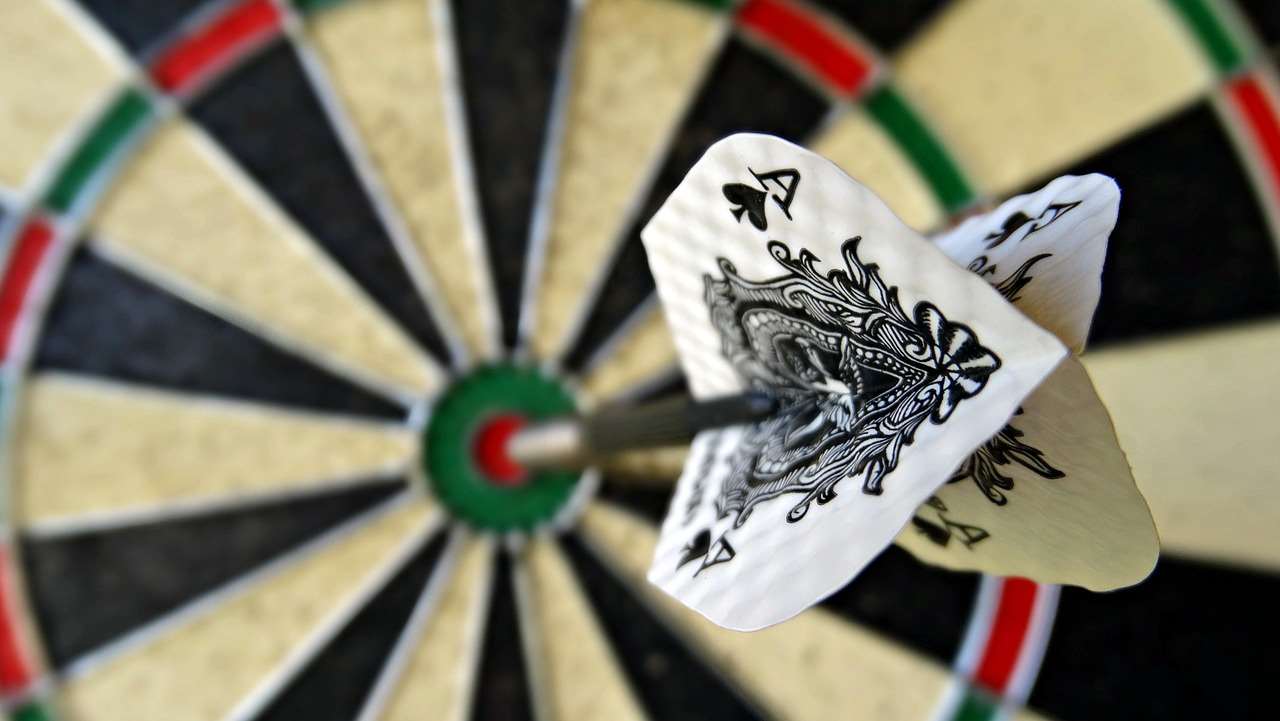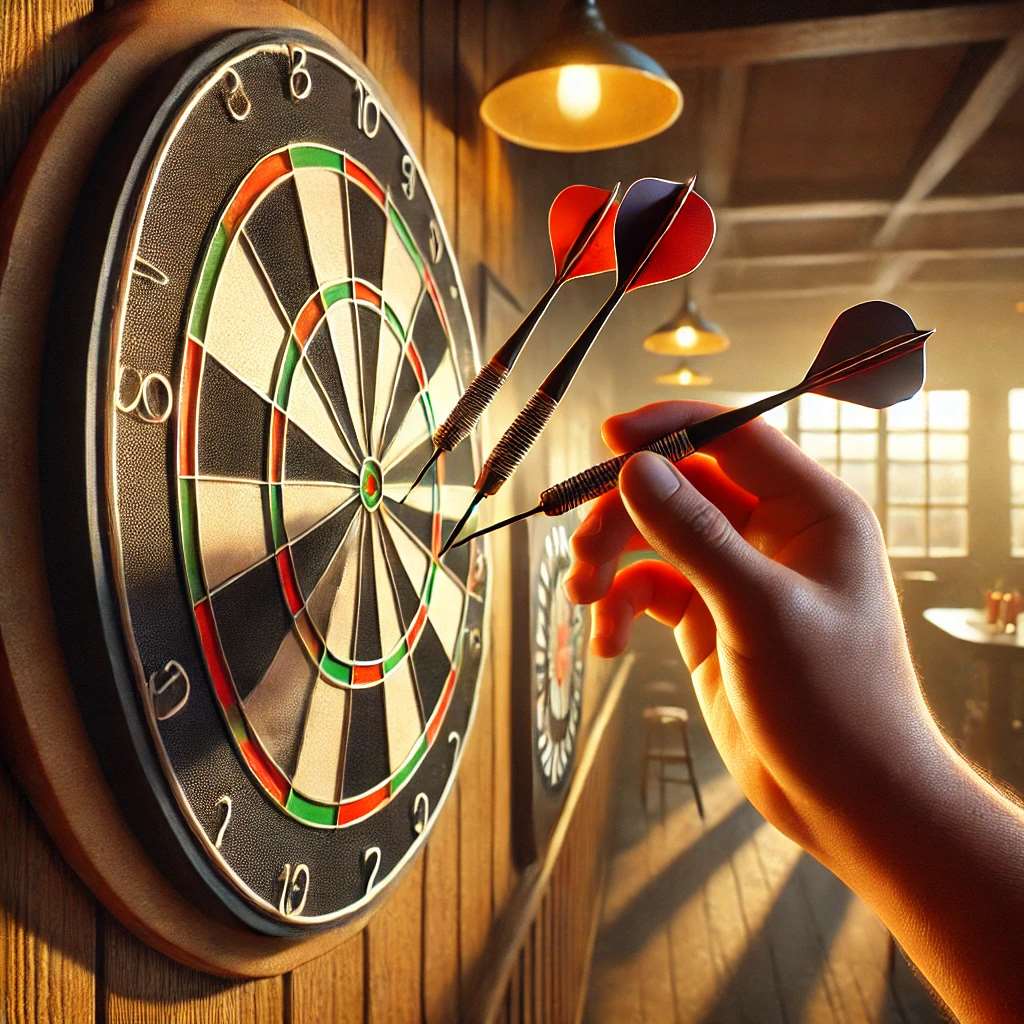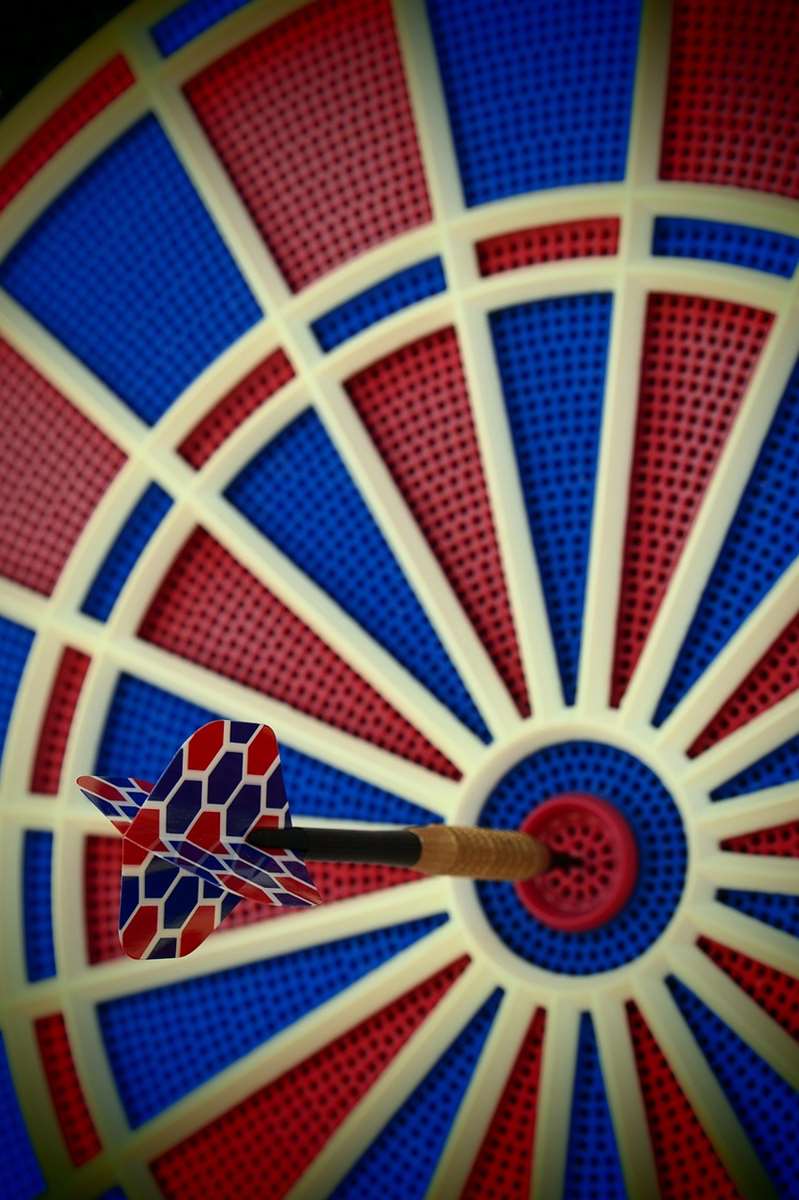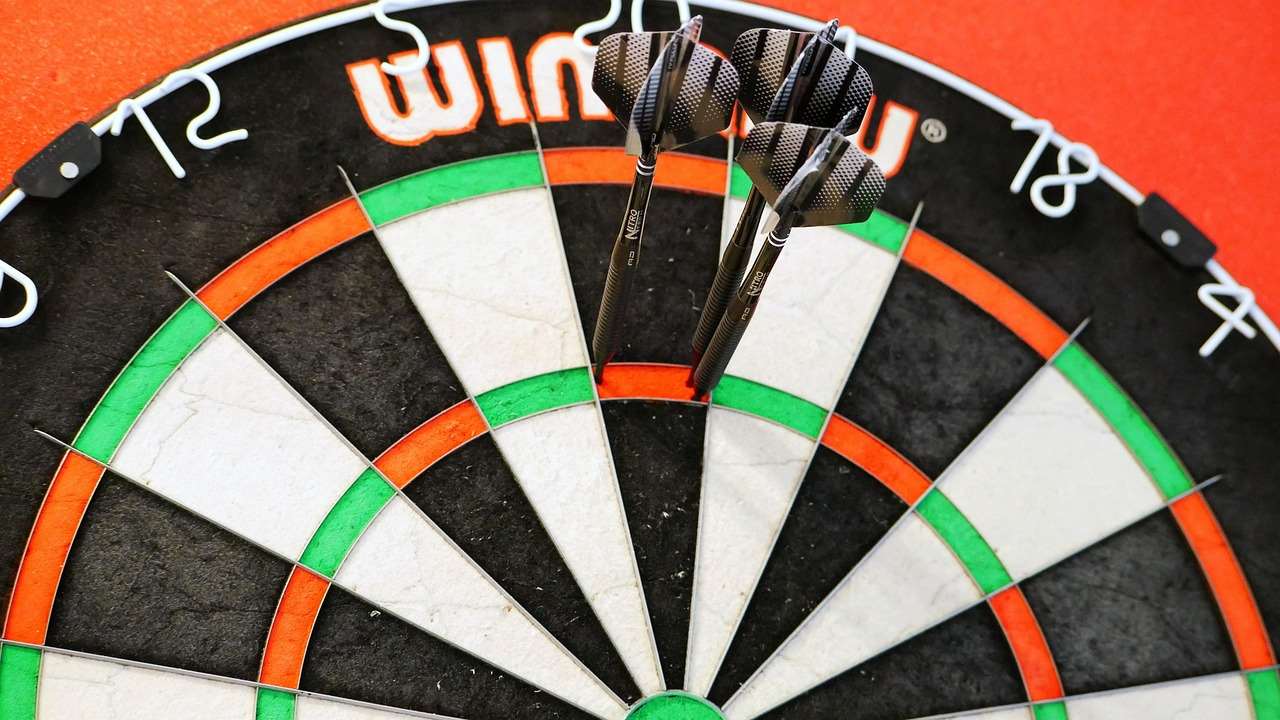Mastering double top darts returns is often the key to closing out legs in darts. This article provides a comprehensive guide to understanding and executing the double top finish, including strategies, practice routines, and mental approaches. You’ll also learn about alternative finishes and how to handle pressure situations.
⚠️ Still Using Pen & Paper (or a Chalkboard)?! ⚠️
Step into the future! The Dart Counter App handles all the scoring, suggests checkouts, and tracks your stats automatically. It's easier than you think!
Try the Smart Dart Counter App FREE!Ready for an upgrade? Click above!
The Psychology of the Double Top
The double top, or D20, holds a unique position in the world of darts. It’s often seen as both the most common and the most dreaded finish. Why is that? It’s often the last step to winning a leg, so the pressure is on! Understanding the psychology behind this target is crucial for improving your success rate. Many players experience a mental block when aiming for the double top, leading to hesitation and inconsistent throws. This is often due to the high stakes associated with it. The fear of missing and losing the leg can be overwhelming.
To combat this, it’s important to treat the double top like any other target on the board. Avoid overthinking and focus on your routine. Visualize the dart hitting the target and maintain a relaxed grip. Positive self-talk can also be incredibly effective. Remind yourself of your past successes and trust your abilities. Mental resilience is key to overcoming the double top jitters.

Strategic Approaches to Double Top Darts Returns
There’s no single “right” way to approach double top darts returns, but a few strategic principles can significantly increase your chances of success. Firstly, understand your outs. Knowing which numbers leave you on a double top is crucial for efficient scoring. This knowledge allows you to plan your throws and avoid unnecessary complications.
Secondly, consider the pressure on the board. If you’re playing against a strong opponent, a more aggressive approach might be necessary. If you have a comfortable lead, a more cautious strategy could be preferable. Adapting your approach to the situation can give you a competitive edge.
Thirdly, practice alternative routes to the double. What happens if you miss the triple 20 and hit a single 20? Do you know your out from 140? Learning multiple ways to arrive at a double allows you to remain flexible and make the most of less-than-perfect throws. One useful thing to consider is the dart legs definition, which will allow you to plan for your outs more strategically and achieve the victory you crave.
Calculating Your Outs
Calculating your outs involves mentally working backwards from your current score to a double finish. For example, if you have 60 remaining, you know that a single 20 will leave you with 40, which is double 20. Practicing these calculations regularly will improve your mental agility and speed up your decision-making process during a match. It is also important to remember the height of darts bullseye when practicing.
When to Take the Double Top
Knowing when to go for the double top is just as important as knowing how to hit it. If you’re under pressure from your opponent, taking the double as early as possible can be a good strategy. However, if you have a comfortable lead, it might be wiser to set yourself up for an easier finish, such as double 16 or double 8, especially if you are having issues with consistent dart accuracy.

Practice Drills for Mastering the Double Top
Consistent practice is the foundation of any successful darts player. Specific drills can help you refine your technique and improve your accuracy on the double top. Here are a few effective drills to incorporate into your practice routine:
- The “Around the Clock” Double Drill: Start at double 1 and work your way around the board to double 20, hitting each double three times before moving on. This drill improves your overall double accuracy and helps you become comfortable with all the doubles.
- The “Double Top Focus” Drill: Dedicate a practice session solely to throwing at the double top. Aim for 100 darts at the D20, focusing on your technique and visualizing success. This drill builds confidence and improves your consistency on the most important double.
- The “Pressure Practice” Drill: Simulate match conditions by setting specific goals for yourself. For example, give yourself 10 darts to finish from 80, 60, or 40. This drill helps you manage pressure and make smart decisions under stress.
Remember to focus on your grip, stance, and release during these drills. Consistent form is crucial for hitting the double top consistently. It is also good to have a Free dart score app to track your progress during these drills.

Alternative Finishes When Double Top Fails
Even the best darts players miss the double top sometimes. Knowing alternative finishes is crucial for maintaining your composure and maximizing your chances of winning the leg. The most common alternatives involve setting yourself up for other doubles, such as double 16, double 8, or double 4. Consider these scenarios:
- Scenario 1: You have 40 left and miss the D20 high, hitting the 1 instead. You now have 39 left. Throwing a 19 leaves you with D10.
- Scenario 2: You have 40 left and miss the D20 low, hitting the 5 instead. You now have 35 left. Throwing a 3 (not so common, but you might need to throw it!) leaves you with D16.
- Scenario 3: You have 40 left and miss the D20 to the left, hitting the 5 instead. You now have 35 left. Throwing a 3 (not so common, but you might need to throw it!) leaves you with D16.
The Importance of Checkout Charts
Checkout charts are invaluable tools for learning alternative finishes. They provide a quick reference for all the possible combinations of throws that can lead to a double. Studying these charts will expand your knowledge of outshots and improve your ability to adapt to different situations. Many players keep a checkout chart readily accessible during matches for quick reference.
Thinking Ahead
Strategic darts play involves thinking one or two throws ahead. When you have a high score remaining, consider which numbers will leave you on favorable finishes. For example, aiming for the triple 19 can leave you on a double 12 (24) if you hit the single 19 instead. This proactive approach increases your chances of finishing efficiently.

Dealing with Pressure and Nerves on the Double Top
The pressure of throwing for the match-winning double can be intense. Nerves can lead to shaky hands, inconsistent throws, and poor decision-making. Developing strategies for managing pressure is crucial for success in competitive darts. Here are some techniques to help you stay calm and focused under pressure:
- Deep Breathing: Take a few deep breaths before each throw to calm your nerves and center your focus. Deep breathing helps slow your heart rate and reduce anxiety.
- Visualization: Visualize the dart hitting the double top before you throw. This mental rehearsal can boost your confidence and improve your accuracy.
- Focus on Your Routine: Stick to your pre-throw routine, regardless of the pressure. Maintaining consistency in your routine helps you stay grounded and avoid overthinking.
- Positive Self-Talk: Remind yourself of your strengths and past successes. Positive self-talk can counteract negative thoughts and boost your confidence.
Remember, even the best players experience nerves. The key is to acknowledge your feelings and use these strategies to manage them effectively. Understanding dart release tips can also assist in managing the stress and pressure of important shots.

Advanced Strategies for Double Top Darts Returns
Once you’ve mastered the basic techniques, you can explore advanced strategies to further enhance your game. These strategies involve analyzing your opponent’s game, understanding board dynamics, and adapting your approach to maximize your chances of success.
Analyzing Your Opponent
Pay attention to your opponent’s strengths and weaknesses. Do they struggle with certain doubles? Do they prefer aggressive or cautious play? Use this information to your advantage by putting them in uncomfortable situations and exploiting their weaknesses. For example, if your opponent struggles with the double 16, try to set them up for that finish.
Understanding Board Dynamics
The dartboard is not a static target. The location of your darts on the board can influence your subsequent throws. For example, if your first dart lands slightly high on the board, you might need to adjust your aim to compensate for the angle. Learning to read the board and adapt your throws accordingly is a valuable skill. Keep in mind darts oche distance from board is also very important for accuracy.
Conclusion
Mastering double top darts returns requires a combination of technical skill, strategic thinking, and mental fortitude. By understanding the psychology behind the double top, practicing consistently, and developing effective pressure management techniques, you can significantly improve your success rate and elevate your game. Remember to analyze your opponent, understand board dynamics, and adapt your approach to maximize your chances of success. Continuous practice, coupled with strategic adjustments, will pave the way for consistent and confident finishes. So, grab your darts and start practicing – the double top awaits! Now, go out there and start practicing!
Hi, I’m Dieter, and I created Dartcounter (Dartcounterapp.com). My motivation wasn’t being a darts expert – quite the opposite! When I first started playing, I loved the game but found keeping accurate scores and tracking stats difficult and distracting.
I figured I couldn’t be the only one struggling with this. So, I decided to build a solution: an easy-to-use application that everyone, no matter their experience level, could use to manage scoring effortlessly.
My goal for Dartcounter was simple: let the app handle the numbers – the scoring, the averages, the stats, even checkout suggestions – so players could focus purely on their throw and enjoying the game. It began as a way to solve my own beginner’s problem, and I’m thrilled it has grown into a helpful tool for the wider darts community.